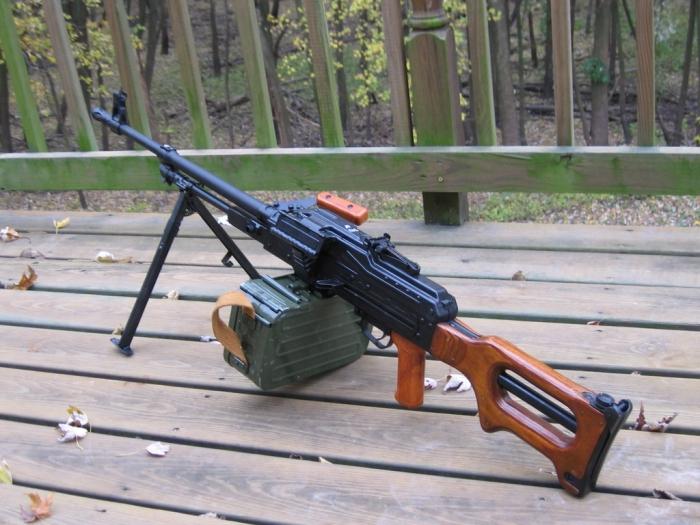The only Kalashnikov machine gun for armament is not only powerful, but also very maneuverable, convenient weapon. The ease of learning to use is due to the similarity of a number of nodes with a Kalashnikov assault rifle. This is one of the reasons why it is in service not only with the Armed Forces of the Russian Federation, but also with other countries of the world. In addition, the advantages include relatively small dimensions and weight and high accuracy of fire. Left-hand feed tape and interchangeable barrel can allow firing without interruption.
History of creation and commissioning
After the Second World War, Soviet engineers faced the problem of creating universal and modern tape-fed weapons. It was supposed to be a powerful machine gun, which would have the advantages of a manual one. The latter include maneuverability and ease of operation. It was decided to create a single machine gun, which would become the basis of weapons. Until that moment, from 1943 until 1961, the SG-43 and RPD were in use, which required modernization and a change. Then a new unified Kalashnikov machine gun was adopted, and another similar model developed by Sokolov and Nikitin competed with him. The new system used in this weapon fundamentally differed from the device of previous analogues. The main differences between the PCs are simpler manufacturing and reliable maintenance, because it is very important that even in the rain the gun remains operational.
Device and automation
The Kalashnikov machine gun has automatic equipment, which is based on the principle of the complete removal of powder gases after firing through the side holes located in the barrel wall. Just under the last is a gas chamber, and not on the side. It has three main fixed positions of the regulator. The barrel is distinguished by its mount in the receiver, it is quick-detachable, which facilitates the assembly / disassembly of the machine gun, as well as its replacement. Foldable handle for easy removal. Improved heat dissipation is provided by additional longitudinal ribs. The flame arrester in the original factory version was conical, but was subsequently replaced by a more efficient cylindrical one. The Kalashnikov machine gun has almost the same chamber shutter as the machine gun. Locking is done by turning it. An important element of PC automation is the shutter frame, which is connected to the gas piston rod. In the channel there is a return-fighting spring. The handle remains motionless even during intensive shooting, as it is loosely connected with the bolt frame. The trigger is adapted for extremely continuous fire. The butt and pistol grip are connected directly to the receiver; the first one has everything necessary for cleaning and lubricating the gun. The tape is fed to the left, the box with them is attached from the bottom. The modernized Kalashnikov machine gun differs from the original one only in a smaller mass.

Varieties
The main variations of this machine gun are related to the purpose. A standard PC installed on a tripod machine is called an "easel" one. And if a bracket is used, for example, on an armored personnel carrier, then the gun is called “armored personnel carrier”, or “PKB”. The machine itself facilitates shooting, making the machine gun more mobile. The batch kit also includes bipods and a butt, this is necessary in case the gun is used outside the armored personnel carrier. There is another variety - a Kalashnikov tank machine gun, which is used in armored vehicles with a tower. It has an electric trigger and a heavier barrel.